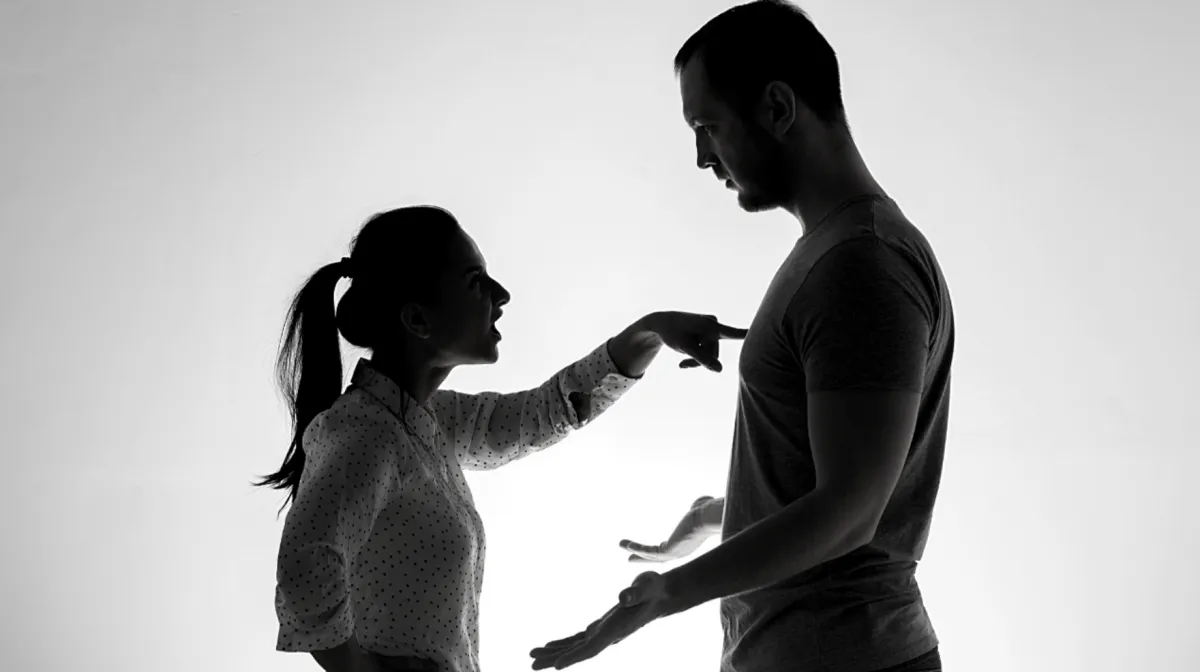Blog

Breaking the Victim / Blame cycle in relationships
Originally posted on September 14, 2020
I was 31 when I became intimately involved in an emotionally abusive relationship. By day, I was an energy healer and holistic health nut, having a profound impact on my clients. By night, I was stuck in a painful codependent, emotionally abusive relationship where I was an expert at being a victim, a complainer, and a blamer. Then one night he beat me up. It took me getting beat up to leave that relationship - but I still wasn't done being a victim.
I graduated to a non-abusive, emotionally unavailable, quiet alcoholic. I just couldn't find that magical partner that I believed was out there who could make me happy.
I believed everyone else was happy. I was great at putting up a front like I had it all together, but inside I was lonely, unhappy, argumentative, emotionally withholding from women and overly giving with men. I was controlling and arrogant and I justified it all with my quick insights.
I exploited my psychic abilities without even consciously knowing it. Truthfully, I was grasping at anything I thought could make me happy. One day, I went to a workshop where Energy Healing was used to release emotional and psychological blocks. This work opened me up to the core of my issues.
My understanding of energy healing and its relationship to my beliefs, my childhood traumas and how they were playing out in my adult life finally made sense. I began to heal, transform and grow into the kind of person I knew had been locked away within me. My happiness was no longer dependent on a relationship. This was an unexpected gift and an enormous relief. I was finally free to have mature, adult, interdependent relationships.
In my work helping couples break the painful cycle of the victim/blame pattern, I’ve found certain key commonalities that both create and can undo the traps to which long term relationships can so easily succumb. Understanding these tendencies can make success more achievable.
Once invested and settled into a committed relationship, it can be easy to find ourselves slipping into the unhealthy habit of using our partner as an emotional release valve for our buildup of tension.
The victim/blame cycle can happen to the best of us and often slips out, unintended. If this behavior remains unchecked or unaccountable to ourselves or by our partners, it can become a hurtful habit with the strong potential to grow into emotional abuse.
Emotional abuse is a form of domestic violence and requires our attention and often professional support. The emotional abuse pattern is often a common denominator of codependent relationships.
Codependency and emotional abuse are less obvious than physical abuse but that doesn’t mean it’s any less painful.
The emotional “abuser” may use criticizing, insulting, blaming, belittling, withholding affection, threatening, humiliating, yelling or other aggressive behaviors to discharge built up tension or create a feeling of power. Beneath this need for power lives a fear of vulnerability. The power allows the abuser to cling to a false sense of emotional safety by using abuse to emotionally, physically or financially control their partner.
The emotionally abused “receiver” of the victim/blame pattern also participates in sustaining the pain pattern. Their behavioral role may appear: passive-aggressive, avoidant, or indirect about their wants and needs. The “victim” is often afraid not only of the abuser’s power but their own power, afraid that asserting their power will result in aloneness or abandonment. The victim may feel it's easier to suffer in silence at the hands of their abuser, then feel the terror of aloneness.
How to break the cycle? Here are some action steps that could get you headed in a healthier direction:
Don’t do it alone. Reach out to a trusted friend or family member (not directly involved). Find a safe zone with someone you can honestly share your deep vulnerable feelings.
Agree on a Time-Out. Have a conversation with your partner when you are both calm, to create an agreement about how to structure a “Time-Out” if either one of you escalates. [When emotional abuse escalates, we are often experiencing a fight-flight-freeze trauma response. It takes at least twenty minutes to an hour for the brain to shift out of that state. Agree to revisit the issue whenever either partner requests a Time-Out can help mitigate the tension.]
Practice tolerating discomfort. This pattern can be challenging to change but it can and does with determination and support. Stretch yourself a bit out of your comfort zone into the unknowns, knowing that change is required for health to happen.
Getting professional help. Seek out an appropriate counselor, therapist, energy healer or support group to increase the healing process. Here are a few resources
Co-Dependents Anonymous: https://coda.org/
Love is Respect: https://www.loveisrespect.org/
Anger Management: https://www.helpguide.org/articles/relationships-communication/anger-management.htm
Get community support. Become a member of our Somagetics Membership and get:
Invitation to join live weekly group calls - up to 6 per week (replays available)
Includes the foundational course "Intro to the 5 Survival Energy Patterns"
Access to our private community
Unlimited access to our Resource Library: videos, webinars, articles, guided meditations and more
You can read more about our membership HERE.
Warmly,
Laura

